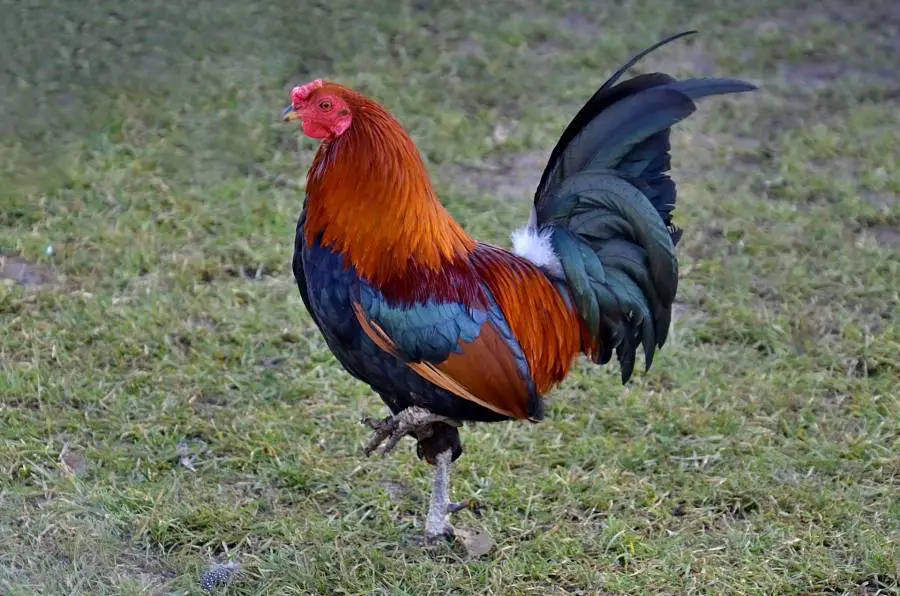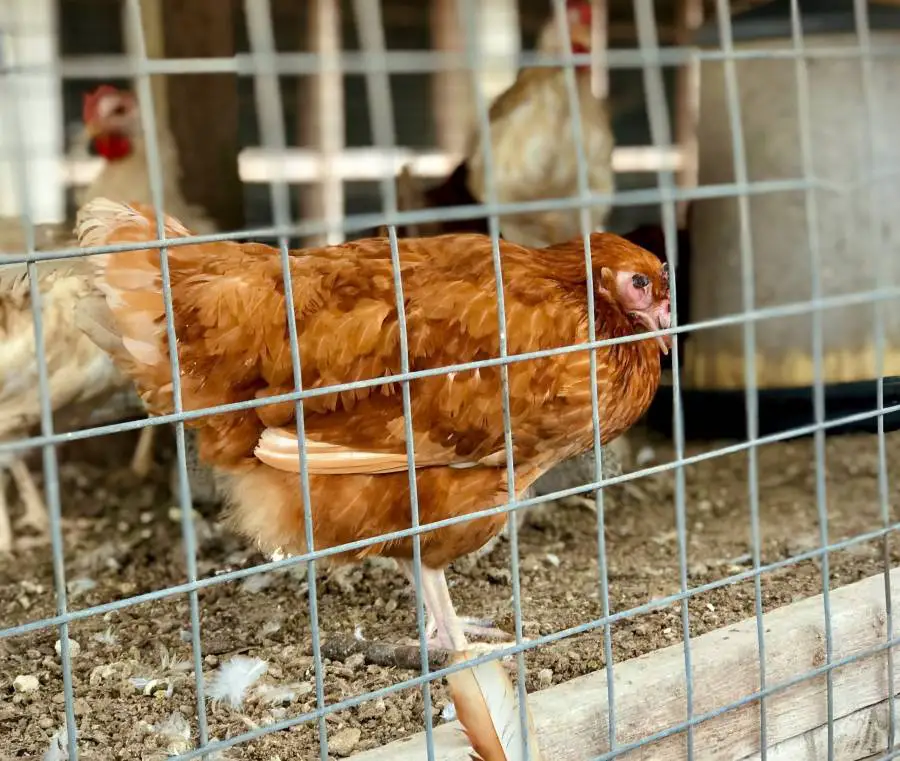Table of Contents
Many things can happen to your chickens, especially when you let them on free range. For example, one may come back with their leg completely limp and unable to walk on it.

The chicken may move a few meters, scooting awkwardly, but for the most part, it’s fairly perky.
If that’s the case with you, you have two options; cull or see how you can treat the dislocated leg.
You don’t want to go the culling way? Fine, we have got you covered.
We will take you through the best treatment options for a chicken with a dislocated leg. Read on.
What Causes Dislocated Legs In Chickens?
The first step in solving a problem is to understand its root.
Therefore, it would help if we first know the causes before looking at the various best treatment options for chickens with the dislocated leg.
As the saying goes, prevention is better than cure. Understanding the causes allows you to prevent such instances from happening again in the nearest future.
There are many ways in which a chicken can get a dislocated leg, including:
- Forcing itself through tiny spaces, especially when trying to get to the other side to enjoy the free range.
- A chicken can also dislocate its leg after jumping from a high end and landing in the wrong position. Chickens used to fly over a fence to the other side are likely to experience dislocated leg issues.
- General accidents. For example, a heavy object may fall on a chicken’s leg and cause dislocation.
4 Best Treatment Options For Chicken With Dislocated Leg
Let’s look at the different treatment options available now that you know how a chicken can develop a dislocated leg, and you’ll try to prevent it (where possible) going forward.
Note
The following treatment options may or may not be 100% effective. It depends on how badly the leg is hurt.
Best Treatment Option #1: Isolate And Leave It To Heal On Its Own
It’s normal to get worried when you find out your chicken has a dislocated leg, particularly when you’re a new owner.
But there’s no need to panic, and sometimes all you need to do is leave it to heal on its own.
- However, you have to isolate the chick first. Keeping the chicken in a cage alone prevents it from getting knocked by the others and worsening the problem. Make sure you give it enough food and water inside the case.
- We recommend adding vitamin B to its diet to speed up the natural healing process.
- If the injury is mild, the leg will heal naturally in two to three days, and the chicken will start walking again normally.
- Sometimes your chicken may dislocate her leg when you’re not around, heal on its own, and you’ll probably never know.
If the dislocated leg doesn’t seem to get better after three days, try to help it in some way to avoid permanent damage. See the Best Treatment Option #2 below.
Best Treatment Option #2: Pop A Chickens Leg Back Into Place
You may not be a vet, but you must be courageous if you want to help your chicken heal her dislocated leg. Here’s how to go about it:
- Isolate the chicken to ensure the others don’t knock it down and worsen the problem.
- As mentioned above, keep her well-fed and watered.
- Hold her and gently try to pop its leg back in place. The leg needs to go below the hip joint and then push up slowly, and hopefully, you should see it pop in.
- Make sure you’re as gentle as possible when popping the leg back into position. Get too rough, and you might break the fragile bones.
- After that, tape it up using bandage material for 7 to 10 days to heal the traumatized joint.
- If, unfortunately, you can’t pop it back, still tap it and allow it time. The tapping may help the leg go back on course over time.
Best Treatment Option #3: Splint It
Another one of the best treatment options for a chicken with a dislocated leg is to split it. It’s a popular method that works magically in resolving this dislocation issue.
Follow these simple steps:
- Find a splint and medical sling. Also, get a light stick to support the leg while wrapping the splint.
- Look for someone to help you hold the chicken while wrapping the leg with the splint.
- Lay your chicken on the opposite side and begin to wrap the splint around the dislocated leg. Try to be as gentle as possible while doing this procedure. Applying pressure can worsen the problem.
- Once you do the initial wrapping, place the light stick on the affected area and wrap it for the second time.
- Keep the chicken in a separate cage and give it time to heal. Give it enough food and water, and it may heal in about two weeks. Once healed, return the chicken to the rest of the flock.
Best Treatment Option #4: See A Vet
It would always feel great if you would help your livestock by yourself. However, sometimes you only need to find help.
And seeing a professional would be the right thing to do when you don’t seem to succeed in making your chicken get better.
Indeed, seeing a vet is one of the best treatment options for a chicken with dislocated leg, especially if you can’t do any of the above on your own.
Call a vet at your home or take the chicken to the one near you. The vet will probably have an X-ray machine to use and ensure that the bone goes back into its socket.
After a vet has seen your chicken, you will need to isolate it to allow it time to heal.
Note
Your vet might suggest clipping the leg if it’s badly damaged and can’t save it. We hope it doesn’t get to that.
But in case that’s the only option, the chicken will have to live on one leg.
Can A Chicken Survive With One Leg?
A chicken with a dislocated leg takes anywhere from 2 days to a couple of weeks to heal and start walking normally again.
The length of the healing process depends mainly on how bad the dislocation is. As mentioned, sometimes the leg won’t heal and thereby requires amputation.
So, the question is, can a chicken survive with one leg?
Your chicken can survive on one leg, although the quality of life won’t be the same anymore. Moving from one place to another would be a challenge.
It will hop around like a kangaroo, especially when it wishes to move fast and compete with the other chickens. But eventually, it will get used to living with one leg.
Conclusion
You don’t need to panic when you see one of your chickens with a dislocated leg. Apply one of the above best treatment options for a chicken with a dislocated leg.
Remember to isolate it to avoid further damage; it will get well after at least two days.
If you can’t do it yourself, have the chicken visit a vet. And if it comes that its leg must be amputated, accept and help her as much as possible to live a normal life.
Or would you rather cull it?

